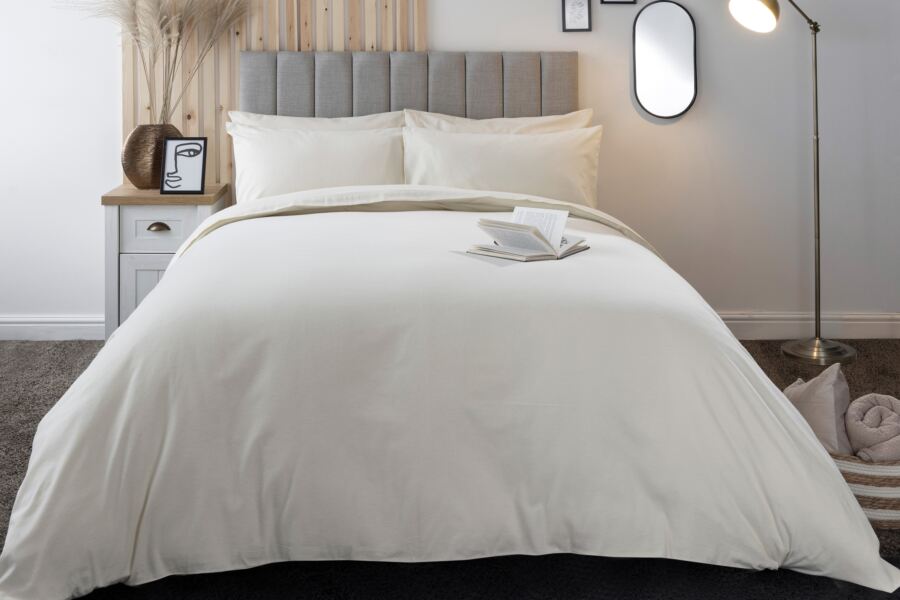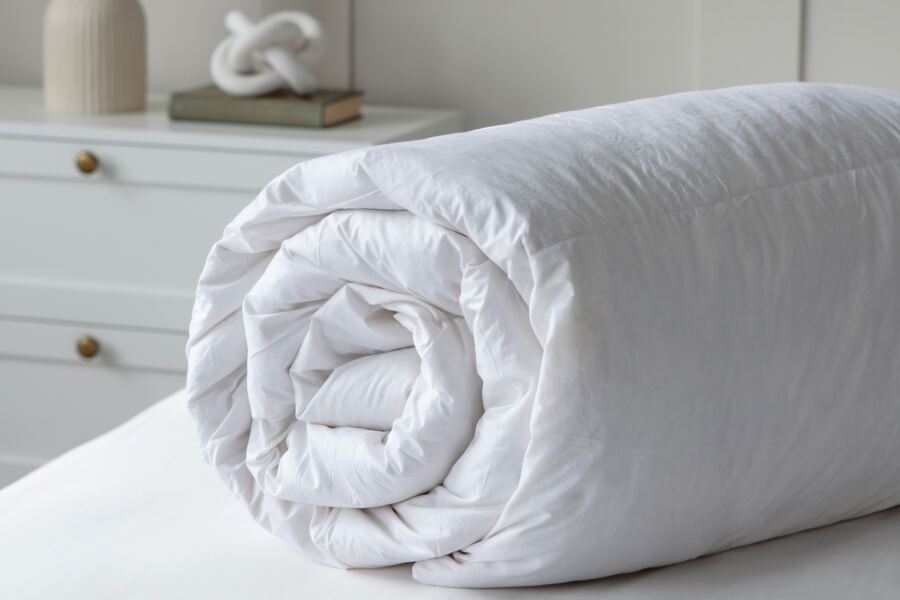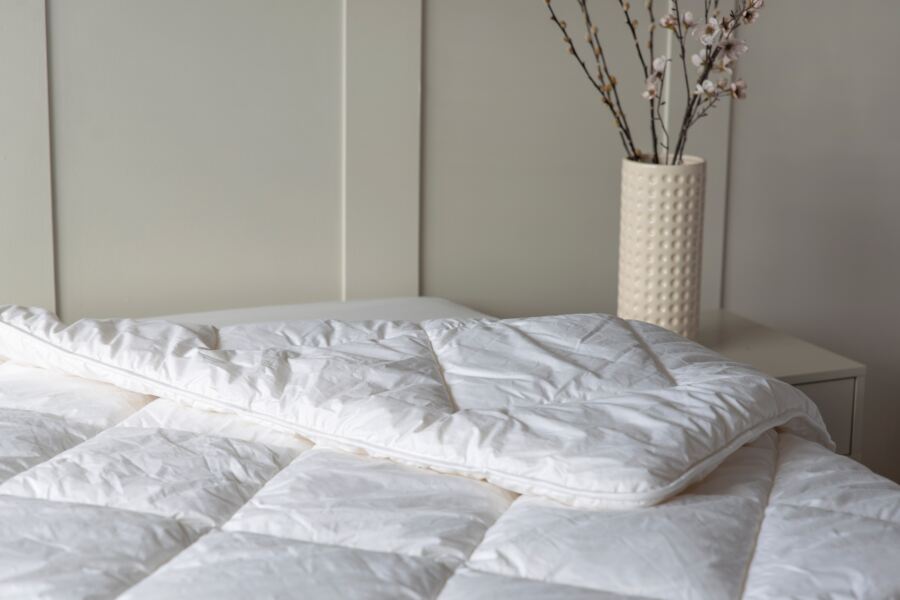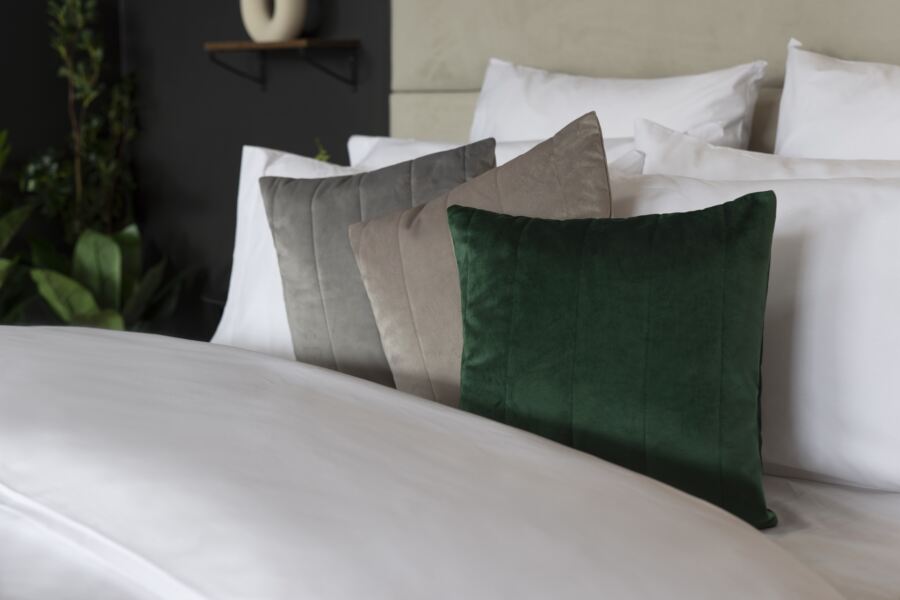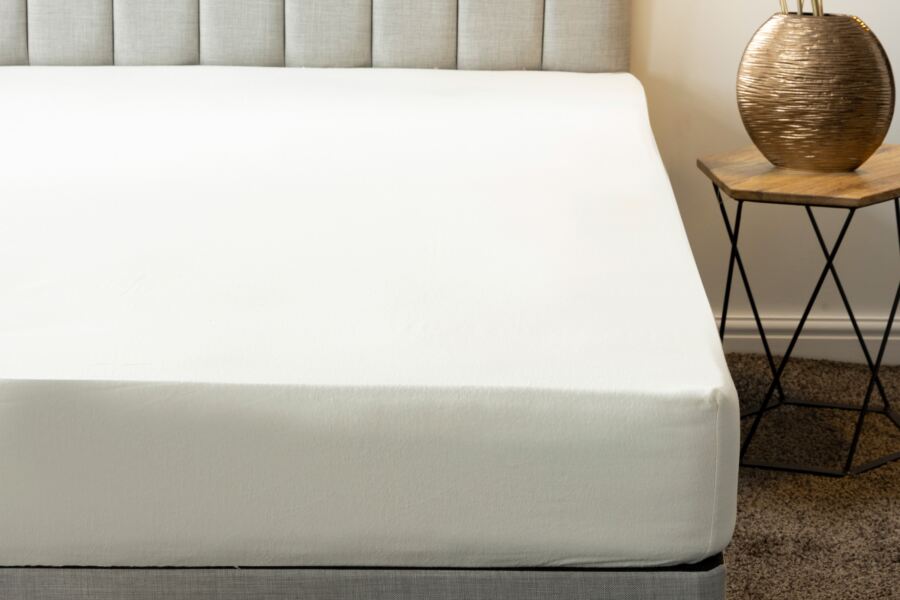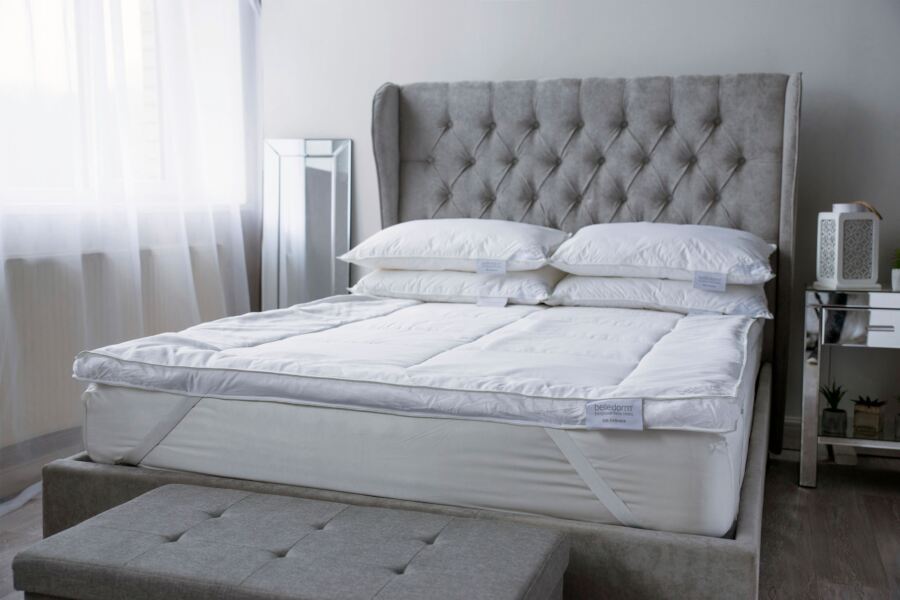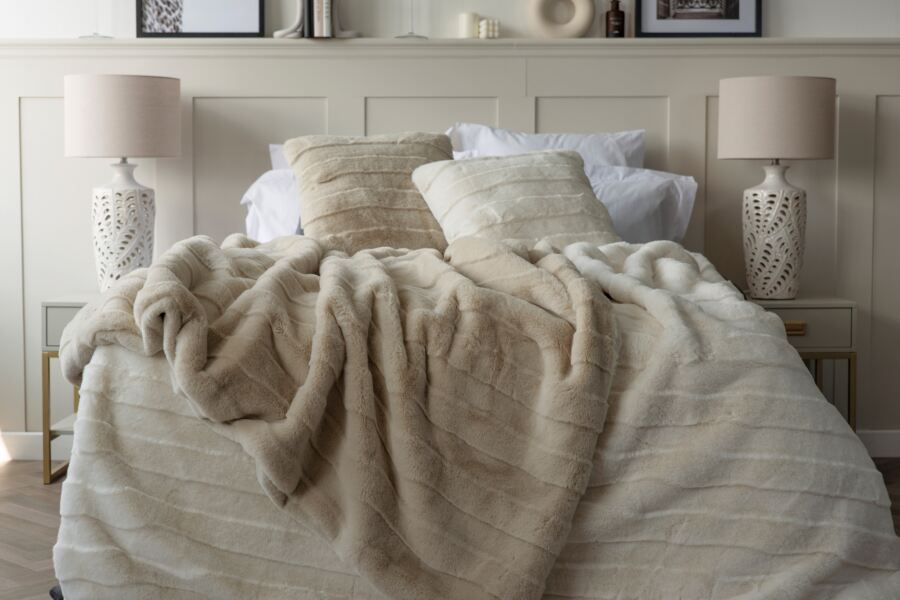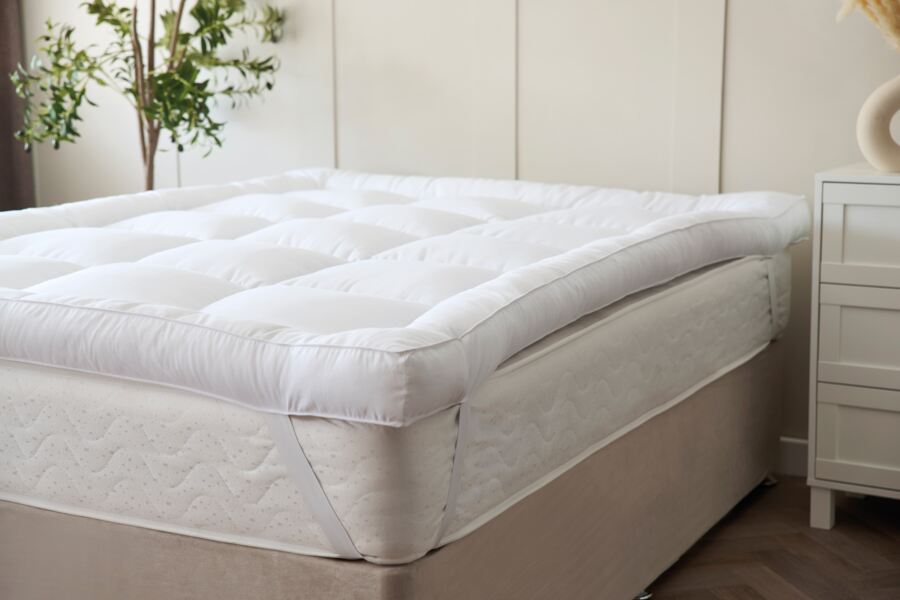Table of Contents
- Why Layer Your Bedding?
- Starting With the Right Base Layer: Sheets
- The Middle Layer: Duvet
- The Top Layer: Quilts and Comforters
- Adding Warmth and Texture
- Practical Extras for Maximum Winter Warmth
- Style Tips for the Ultimate Winter Bed
- In Closing
- FAQs
There's nothing quite like climbing into a warm, inviting bed on a frosty winter's night, but staying cosy can prove quite the challenge.
Yes, you could just crank up the thermostat, but the smarter, more stylish solution is to master the art of layering your bedding.
Layering doesn't mean just throwing on a few extra blankets, though. It's about knowing how to combine different fabrics, textures, and weights so that your winter bedding traps the heat, feels good on your skin, and is beautiful to look at.

Why Layer Your Bedding?
In the same way that you layer your clothing to stay warm, it makes just as much sense to layer your bedding. Each new layer traps pockets of warm air and keeps the chill at bay when summer leaves the building.
Instead of relying on one thick duvet, you can combine sheets, blankets, and throws to keep you comfortable at night. Plus, you can remove layers as you need to, which is especially useful in the UK, where temperatures can fluctuate and central heating isn't always left on overnight.
Starting With the Right Base Layer: Sheets
A comfortable winter bed starts with the right base layer. What you put around or directly on your mattress can make all the difference to how warm, cosy, and supportive your bed feels.
Begin with a mattress topper if you want to add an extra layer of softness and insulation. Toppers are great for regulating your body heat and can actually make your bed feel warmer without having to pile on too many bedspreads.
Right underneath that, you'll want a mattress protector - not just as a barrier against the cold, but for hygiene purposes, too. The protector creates a washable barrier that shields your mattress from sweat, spills, dust mites, and allergens.
If you prefer a more decorative look, you could also go with a fitted bed cover or valance to block out draughts.
Next comes the sheet itself. And because it's winter, brushed cotton or flannel sheets are the best pick. They have a much softer feel and can retain heat better than crisp cotton.
Also, if you enjoy using an electric blanket, place it on top of your mattress protector but under your sheet for the best results.
The Middle Layer: Duvet
Once you've laid the foundation, it's time to move on to your duvet.
A good duvet will, naturally, provide the bulk of your insulation, but it also depends on the bedding fabrics you choose.
Natural fillings like feather, down, or wool are best for trapping heat, but they're still breathable. However, if allergies are an issue, you may want to go with a synthetic option.
And for maximum warmth, go with higher tog ratings - preferably something between 12 and 15 tog.
Hot sleepers may also want to look into all-season duvets. They're made up of two lighter layers that can be combined during the colder months and separated once it gets warmer. This is one of those bedding investments that really pays off.
How you layer your duvet matters, too. Adding a top sheet underneath your duvet gives you an extra layer of warmth, but it also makes it easier to keep your bedding fresher for longer.
Lastly, make sure you choose the right duvet cover. Brushed cotton, linen, and percale offer an ideal balance of warmth and airflow, so you won't be left feeling stuffy at night.
There's also the option of newer eco-duvets made from bamboo, which are lightweight, breathable, and kinder to the planet.

The Top Layer: Quilts and Comforters
When it comes to finishing off your warm bedding, a quilt or comforter is the final piece of the puzzle.
As you move into the colder months of winter, a well-chosen quilt or comforter can make your bed feel like a snug cocoon.
The beauty of this step is that it allows you to play around with a wide bedding range. Traditional quilts add a more timeless feel, while comforters can bring a plush, luxurious touch - but be sure to pick your materials carefully.
For example, a quilted cotton option keeps things breathable, while a faux fur comforter transforms your bed into a cosy winter retreat.
Layering a quilt or comforter on top of your bed also gives you multiple layers that can be adjusted to suit your comfort.
Adding Warmth and Texture
Once your base and middle layers are in place, it's time to add those finishing touches to your perfect bed.
Throws and pillows might be decorative, but they also play a role in keeping you comfortable, warm, and surrounded by different textures.
Start by draping a throw blanket over the end of your bed. Throws help keep hot air close to your body, while breathable fabrics such as wool or cotton blends give you those moisture-wicking properties.
Next, bring in pillows. Beyond your sleeping pillows, add in a few square pillows at the back for a sense of depth. Decorative cushions in plush fabrics or seasonal shades can lift the look of your bed instantly and make it feel more inviting on dark winter nights.
Mixing textures is what's key, though. For example, you could pair a chunky knit throw with velvet cushions, or combine faux fur with smooth cotton for a beautiful contrast.
Practical Extras for Maximum Winter Warmth
Even with carefully layered bedding fabrics, there are a few handy extras that can take your cold-weather setup from cosy to ultimate comfort.
These additions might not always be the first things that come to mind, but they can be a real game-changer when the temperatures start to drop.
For one, you can't go wrong with a hot water bottle. It's one of the best ways to enjoy targeted heat for a good few hours, helping you get a restful night's sleep.
A bed skirt is also highly recommended. Most people use this for show, but it makes a major difference when it comes to blocking out draughts from underneath the bed.
Don't forget the rest of your environment, either. Thermal curtains are excellent for keeping out winter breezes and can be used year-round to regulate temperature and light in your bedroom.
Style Tips for the Ultimate Winter Bed
Layering your bed for warmth is one thing, but creating a look that feels as inviting as it is functional takes a little style know-how.
Winter is the perfect time to embrace deeper colours, richer textures, and thoughtful layering that transforms your bedroom into your favourite sanctuary.
Start with colour by picking rich, bold hues to set the mood. Think darker shades of greens, purples, and blues, as well as neutrals like taupe and stone. It's important to avoid a flat look, though, so rather combine one or two statement colours with neutral bedding pieces. This way, your accents get to shine without overwhelming the room.
You'll want to move onto textures next, because that's how you'll achieve depth and cosiness. The more varied the materials, the more inviting your bed will appear. Don't be scared to play with patterns, either. Checks, tartans, and subtle florals work beautifully during the colder months.
Then there are those final touches. Pillows of various sizes and in different textures give your bed more height and a sense of abundance. It creates that place you want to dive straight into.
To complete the atmosphere, finish off your room with candles, warm lighting, curtains and rugs.
Your bedroom is now both warm and wonderful to look at.

In Closing
Once that winter chill sets in, your bedroom should be more than just a place to sleep.
The beauty of layering is that it's flexible. It's so easy to adjust your bedding to suit the changing temperatures, mix textures for visual depth, and choose colours that match the season.
Make this the year you embrace layering, and you may just find you enjoy the colder months a lot more.
FAQs
What tog rating should I get for a winter duvet?
A duvet with tog ratings of between 10.5 and 15 is generally ideal for UK weather. If you have a cooler bedroom, a rating of 12 - 15 is great, but if your room is well-insulated, you can stick with something between 10.5 and 12.
How many layers of blankets, throws and sheets should I use without overheating?
Instead of just piling on multiple blankets, it's better to stick to smart combinations, like a good-quality sheet, duvet and an adjustable quilt or throw on top, which will trap warm air without smothering you.
If I layer my bedding, can I use my central heating less?
Yes, layering your bedding is one of the most cost-effective ways to boost your bedroom's comfort and add extra warmth without turning up your heating. Each layer helps keep warm air close to your body and improves insulation around the bed, so you won't be as reliant on central heating.


